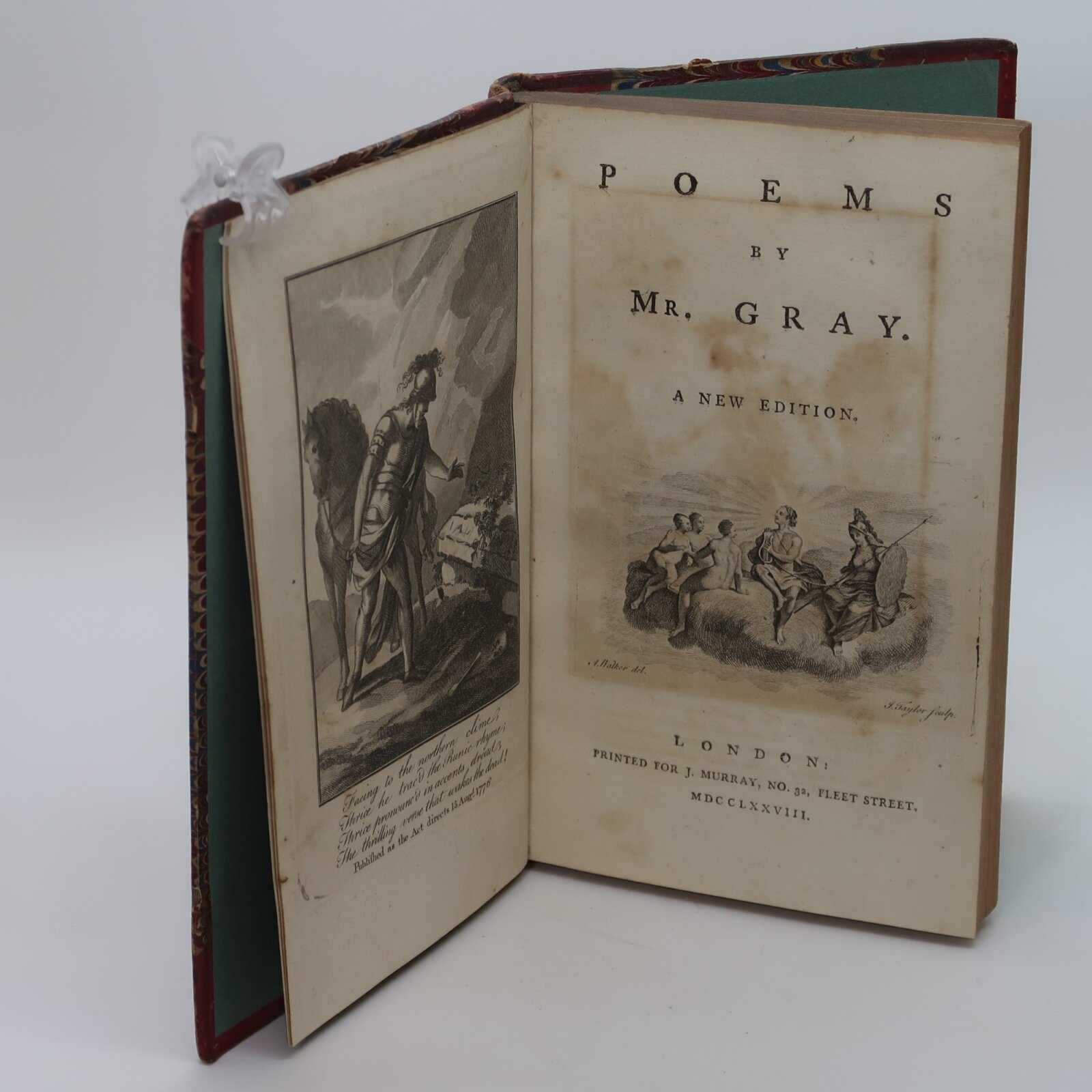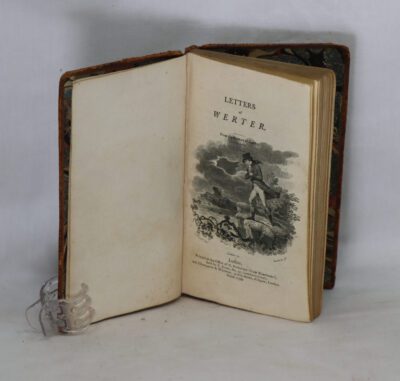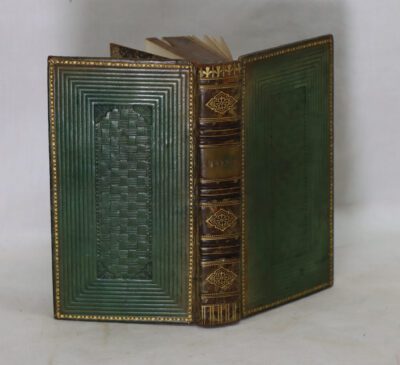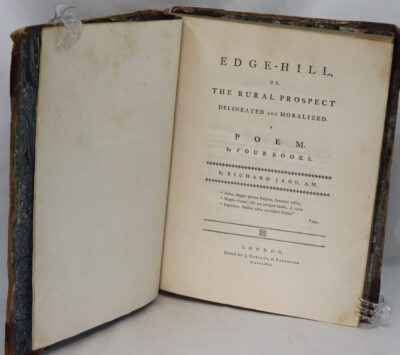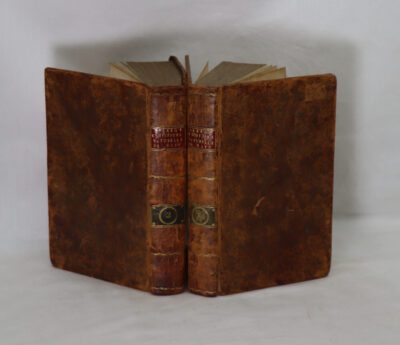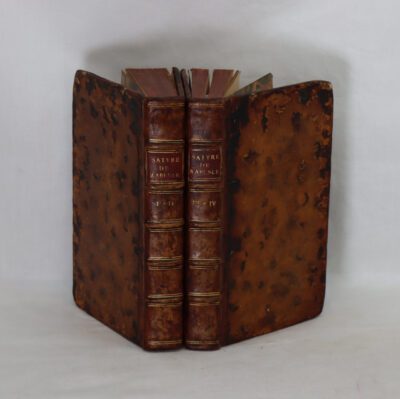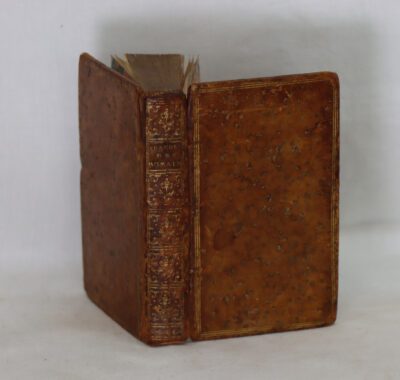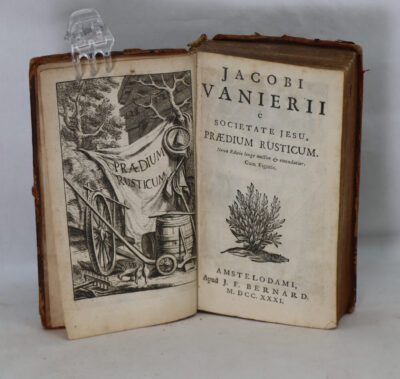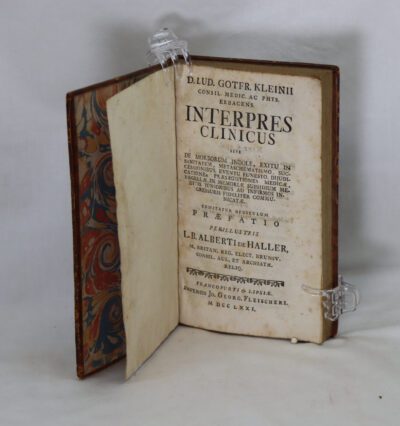Poems. Gray.
By Thomas Gray
Printed: 1778
Publisher: J Murray. London
| Dimensions | 12 × 18 × 1.5 cm |
|---|---|
| Language |
Language: English
Size (cminches): 12 x 18 x 1.5
Condition: Fine (See explanation of ratings)
FREE shipping
Your items
Item information
Description
Red leather spine with black title plate, gilt decoration and lettering. Red marbled boards.
It is believed by a number of writers that Gray began writing arguably his most celebrated piece, the Elegy Written in a Country Churchyard, in the graveyard of St Giles’ parish church in Stoke Poges, Buckinghamshire (though this claim is not exclusive), in 1742. After several years of leaving it unfinished, he completed it in 1750 (see elegy for the form). The poem was a literary sensation when published by Robert Dodsley in February 1751 (see 1751 in poetry). Its reflective, calm, and stoic tone was greatly admired, and it was pirated, imitated, quoted, and translated into Latin and Greek. It is still one of the most popular and frequently quoted poems in the English language. In 1759, during the Seven Years War, before the Battle of the Plains of Abraham, British General James Wolfe is said to have recited it to one of his officers, adding, “I would prefer being the author of that Poem to the glory of beating the French to-morrow.”
The Elegy was recognised immediately for its beauty and skill. It contains many phrases which have entered the common English lexicon, either on their own or as quoted in other works. These include:
- “The Paths of Glory” (the title of a 1957 anti-war movie about World War I, produced by and starring Kirk Douglas, and directed by Stanley Kubrick, based on a novel of the same name by Humphrey Cobb).
- “Celestial fire”
- “Some mute inglorious Milton”
- “Far from the Madding Crowd” (the title of an eponymous novel by Thomas Hardy, filmed several times)
- “Full many a flower is born to blush unseen, and waste its sweetness on the desert air,” is quoted often, including by Annie Savoy (Susan Sarandon) in the film Bull Durham
- “The unlettered muse”
- “Kindred spirit”
“Elegy” contemplates such themes as death and afterlife. These themes foreshadowed the upcoming Gothic movement. It is suggested that perhaps Gray found inspiration for his poem by visiting the grave-site of his aunt, Mary Antrobus. The aunt was buried at the graveyard by the St. Giles’ churchyard, which he and his mother would visit. This is the same grave-site where Gray himself was later buried.
Gray also wrote light verse, including Ode on the Death of a Favourite Cat, Drowned in a Tub of Gold Fishes, a mock elegy concerning Horace Walpole’s cat. After setting the scene with the couplet “What female heart can gold despise? What cat’s averse to fish?”, the poem moves to its multiple proverbial conclusion: “a fav’rite has no friend”, “[k]now one false step is ne’er retrieved” and “nor all that glisters, gold”. (Walpole later displayed the fatal china vase (the tub) on a pedestal at his house in Strawberry Hill.)
Gray’s surviving letters also show his sharp observation and playful sense of humour. He is well known for his phrase, “where ignorance is bliss, ’tis folly to be wise.”, from Ode on a Distant Prospect of Eton College. It has been asserted that the Ode also abounds with images which find “a mirror in every mind”. This was stated by Samuel Johnson who said of the poem, “I rejoice to concur with the common reader … The Church-yard abounds with images which find a mirror in every mind, and with sentiments to which every bosom returns an echo”. Indeed, Gray’s poem follows the style of the mid-century literary endeavour to write of “universal feelings.” Samuel Johnson also said of Gray that he spoke in “two languages”. He spoke in the language of “public” and “private” and according to Johnson, he should have spoken more in his private language as he did in his “Elegy” poem.
Thomas Gray (26 December 1716 – 30 July 1771) was an English poet, letter-writer, classical scholar, and professor at Pembroke College, Cambridge. He is widely known for his Elegy Written in a Country Churchyard, published in 1751.
Gray was a self-critical writer who published only 13 poems in his lifetime, despite being very popular. He was even offered the position of Poet Laureate in 1757, though he declined. His writing is conventionally considered to be pre-Romantic but recent critical developments deny such teleological classification.
Gray began seriously writing poems in 1742, mainly after the death of his close friend Richard West, which inspired “Sonnet on the Death of Richard West”. He moved to Cambridge and began a self-directed programme of literary study, becoming one of the most learned men of his time. He became a Fellow first of Peterhouse, and later of Pembroke College, Cambridge. According to Britannica, Gray moved to Pembroke after the students at Peterhouse played a prank on him.
Gray spent most of his life as a scholar in Cambridge, and only later in his life did he begin travelling again. Although he was one of the least productive poets (his collected works published during his lifetime amount to fewer than 1,000 lines), he is regarded as the foremost English-language poet of the mid-18th century. In 1757, he was offered the post of Poet Laureate, which he refused. Gray was so self-critical and fearful of failure that he published only thirteen poems during his lifetime. He once wrote that he feared his collected works would be “mistaken for the works of a flea.” Walpole said that “He never wrote anything easily but things of Humour.” Gray came to be known as one of the “Graveyard poets” of the late 18th century, along with Oliver Goldsmith, William Cowper, and Christopher Smart. Gray perhaps knew these men, sharing ideas about death, mortality, and the finality and sublimity of death.
In 1762, the Regius chair of Modern History at Cambridge, a sinecure which carried a salary of £400, fell vacant after the death of Shallet Turner, and Gray’s friends lobbied the government unsuccessfully to secure the position for him. In the event, Gray lost out to Lawrence Brockett, but he secured the position in 1768 after Brockett’s death.
Want to know more about this item?
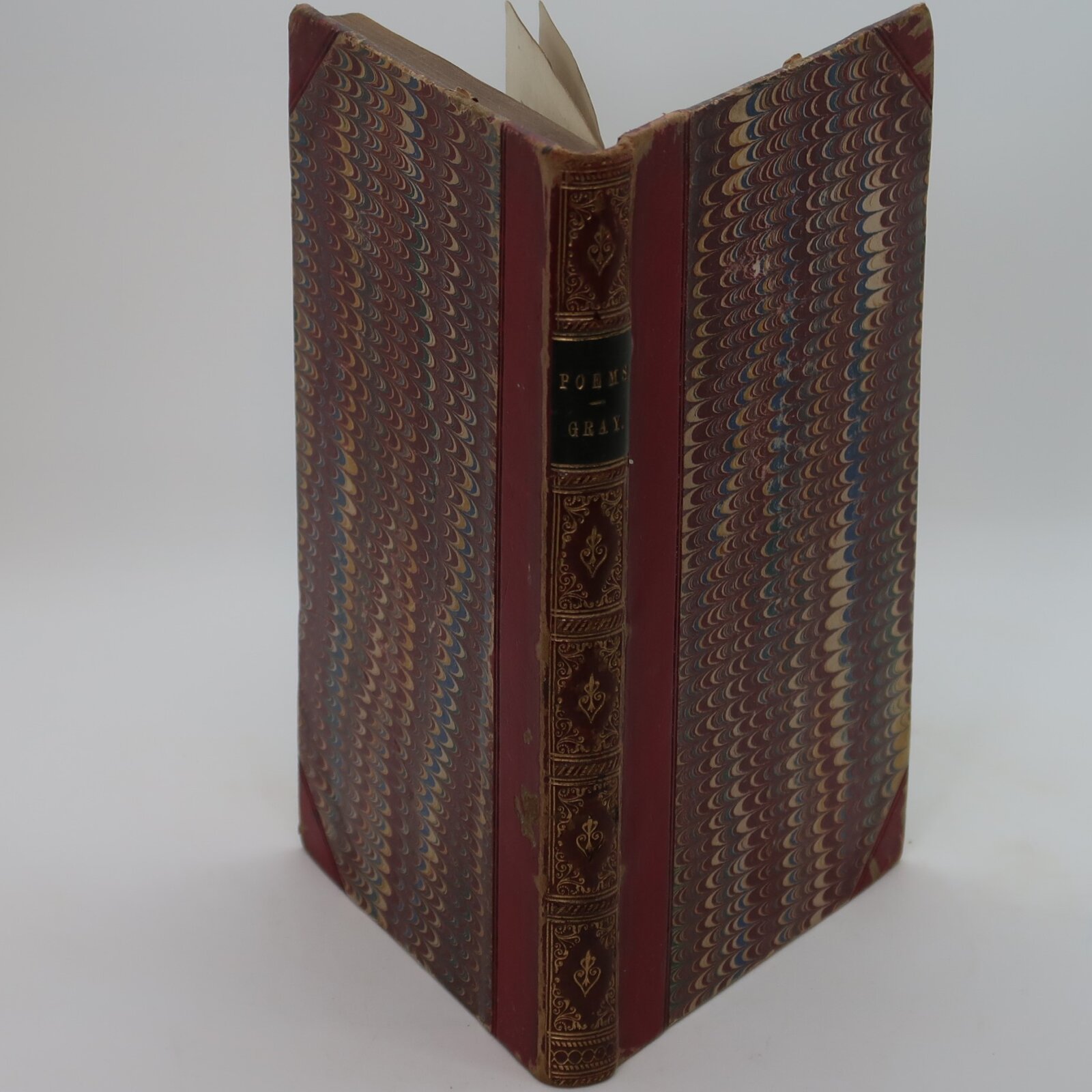
Related products
Share this Page with a friend

